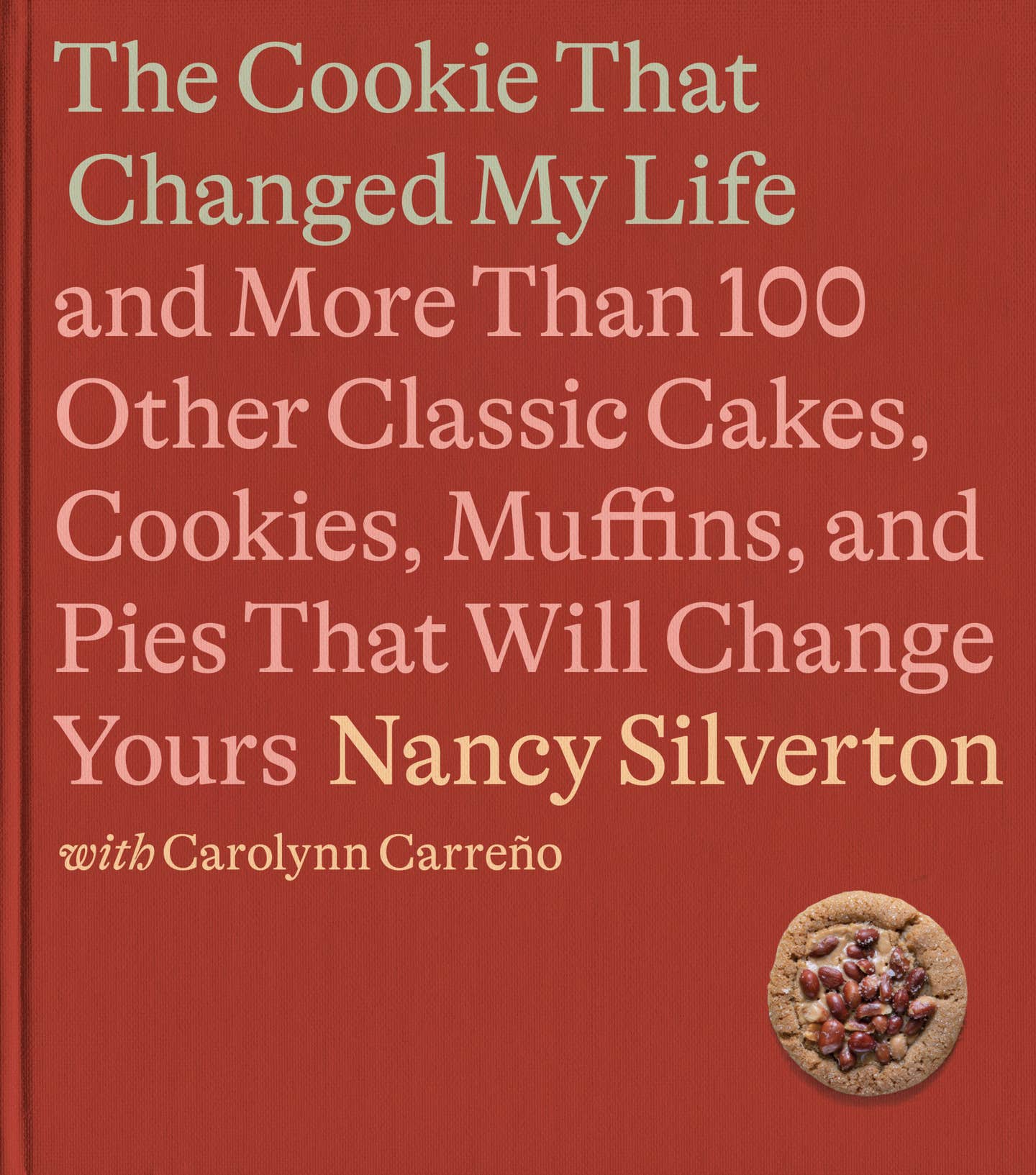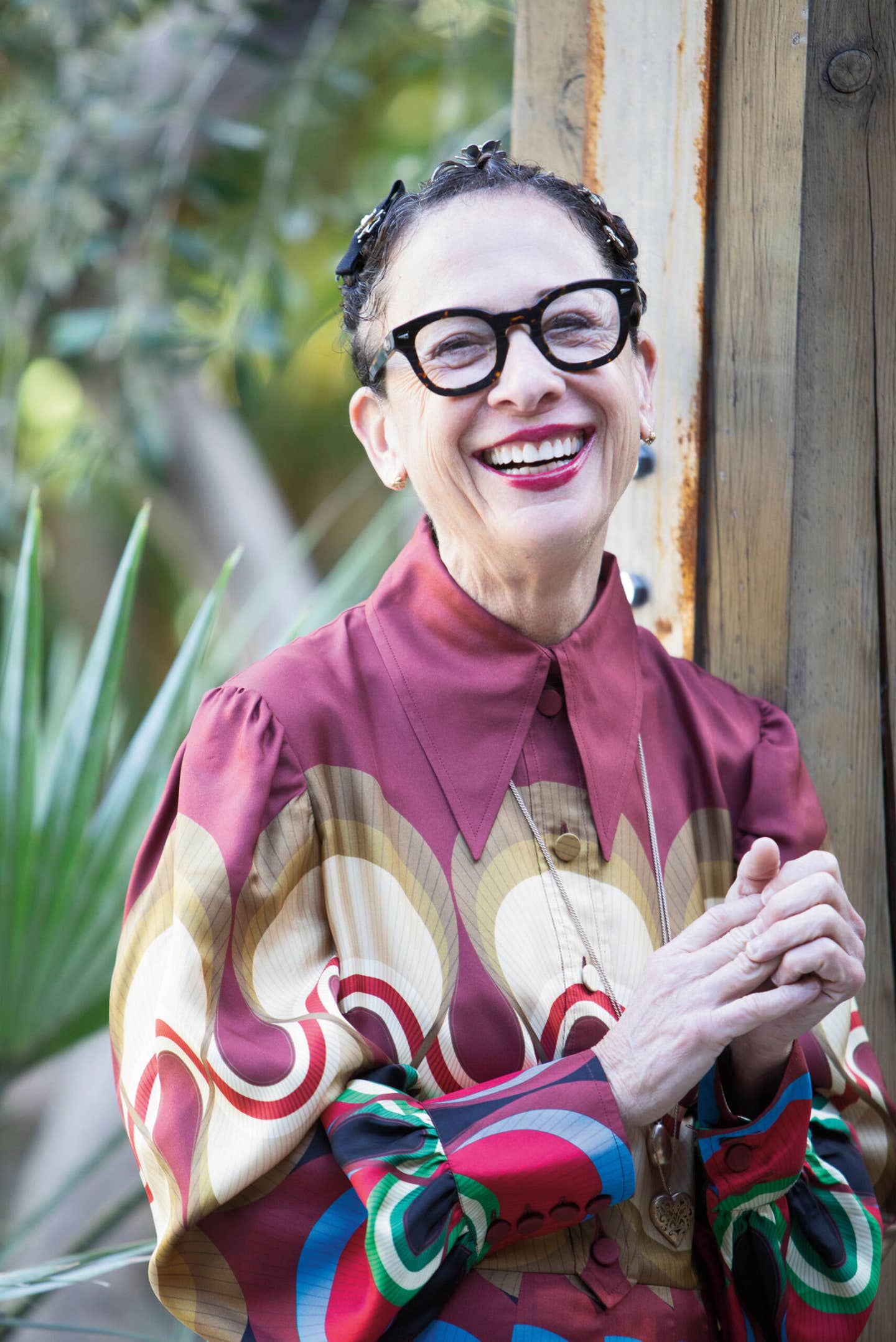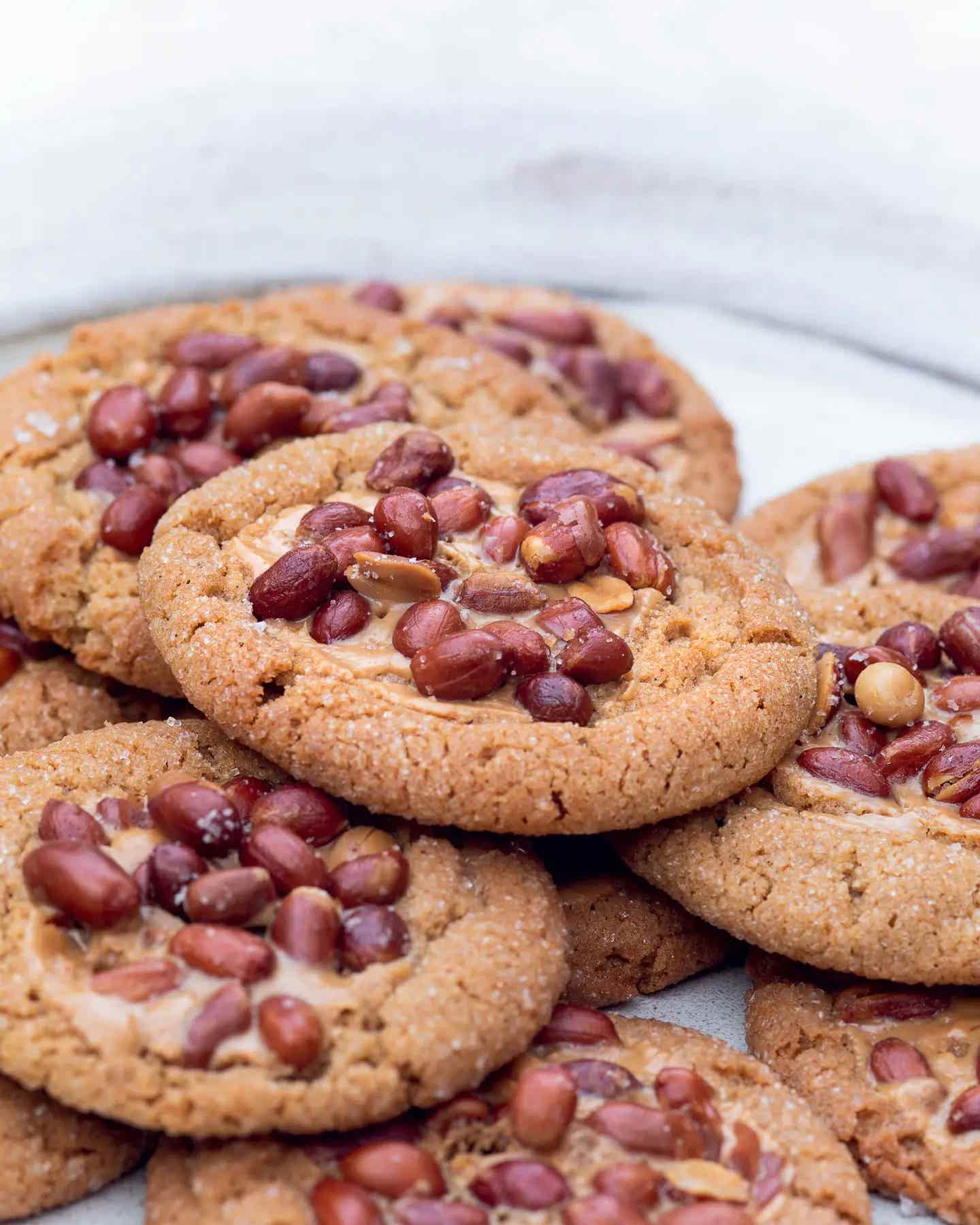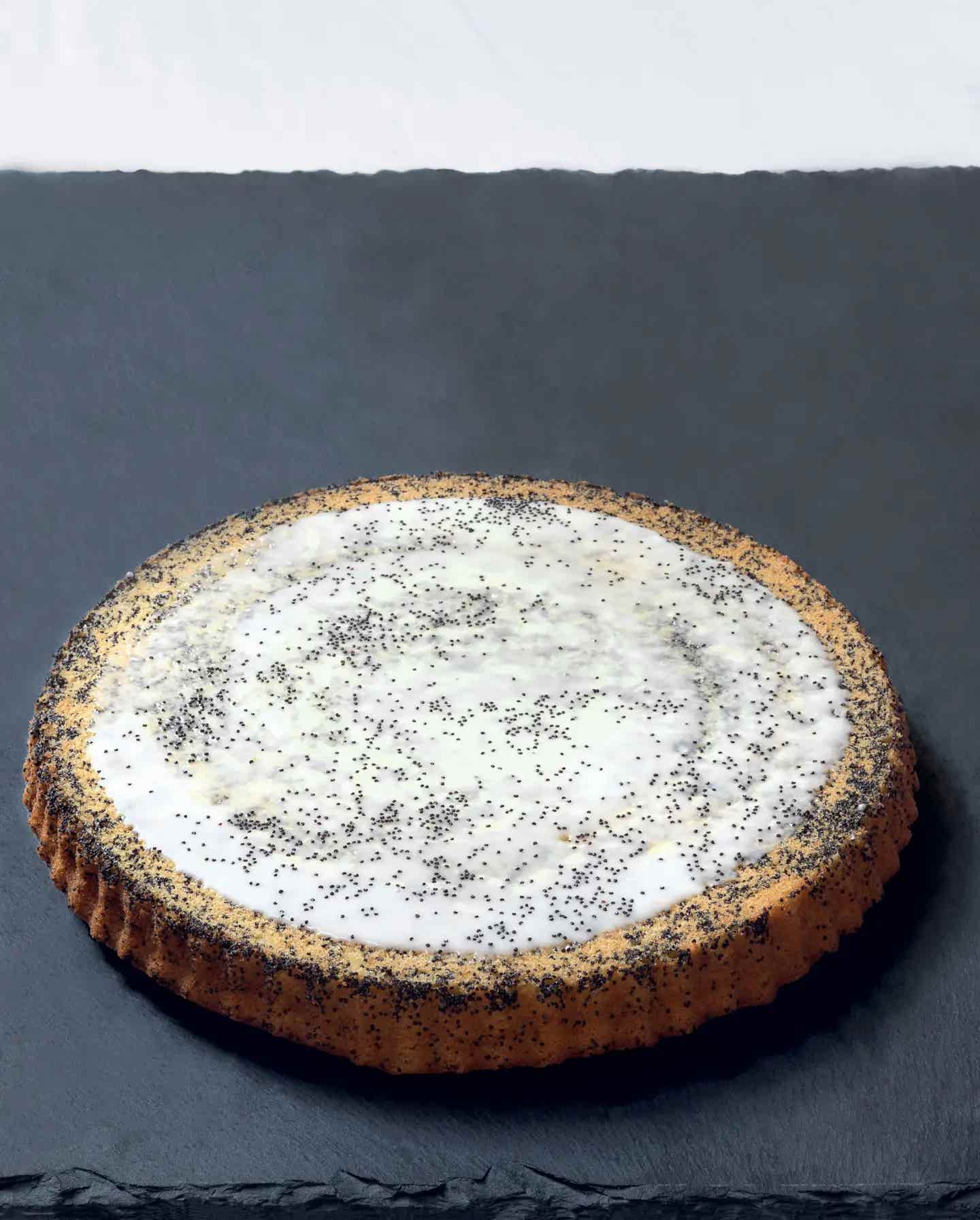Nancy Silverton Won’t Rest Until She’s Perfected the Classics
The culinary legend turns her expert eye to memorable American desserts, building an anthology of the “best-ever” versions of your favorite sweet treats.

This interview is brought to you by the SAVEUR Cookbook Club, our passionate community of food-loving readers from around the globe celebrating our favorite authors and recipes. Join us as we cook through a new book every month, and share your food pics and vids on social media with the hashtags #SAVEURCookbookClub and #EatTheWorld.
Is there anything Nancy Silverton can’t do? Since she first made a splash in the 1980s with her expertly crafted desserts for Wolfgang Puck’s era-defining restaurant, Spago, Silverton has become the definition of a culinary powerhouse. As the co-owner of several California restaurants including Pizzeria Mozza, Osteria Mozza, Mozza2Go, and chi SPACCA, and the founder of the iconic, now-closed Campanile and the world-renowned La Brea Bakery, Silverton has shaped the way Americans break bread (and pizza, and baked goods) for the last half-century. At every stage of her career, she has been ten steps ahead of what we would eventually realize was delicious: artisan bread, wood-fired pizza, and now, the best-ever versions of classic American desserts.
As the author of 10 cookbooks, it would seem that by 2023, her well of endlessly tested, irrefutably delicious recipes would have run dry. Yet during the COVID-19 pandemic, as we all turned to sourdough starters to fill our days, Silverton turned to a perfect peanut butter cookie, the creation of her friend and former employee Roxana Jullapat, of Los Angeles’ Friends & Family bakery. The beautifully crackled top of the cookie, its perfectly rounded edges, its intensely peanutty flavor, all stopped Silverton in her tracks. She had found a new reason to head to the oven, to make “the absolute best version of the familiar baked goods that we all know and love.” Her next book, The Cookie That Changed My Life, was underway.
Silverton took the time out of her latest research trip in Tuscany to speak with me about her newest book. I already knew Silverton was a masterful baker and recipe writer—as an Angeleno kid, I grew up on La Brea’s bread, and during my early years in New York, I regularly consulted A Twist of the Wrist, a resourceful pantry-based cookbook that was way ahead of its time in celebrating the culinary power of tinned, jarred, and canned ingredients. But I never imagined she’d have so much to say about revisiting classic desserts with an eye towards a thoroughly joyful baking experience. There’s no one I’d trust more to guide me toward those classics than Silverton, or to know the difference between a good recipe and something that is truly, transcendently delicious.

This is your eleventh cookbook. How has your process of cookbook and recipe writing changed over the course of your career?
When I write a cookbook, it's always because I’ve latched onto a subject that I can't wait to share. Even though this is my fourth baking book, they're all completely different. The first one just fell in my lap, because Wolfgang Puck's agents were frequent diners at Spago, and they fell in love with the desserts and asked me if I would write a book. I was flattered—and intimidated—but of course I said yes, so that book reflected what I was making at the time. Then I went on to write Breads from La Brea Bakery, because I was so excited to share how I’d figured out how to make a loaf of bread. Then I wanted to share the pastries from the bakery, because I’d become so proud of those rustic, non-plated baked goods. When La Brea Bakery and Campanile opened, they really were the first of their kind, the first of the bakery-café concept (before Panera and everyone else joined in).
And then for a while I thought I was out of ideas–I’d done all the restaurant books already. But this cookie got me really excited about revisiting memorable desserts, those things people really want to make at home. I think that anybody who says they want to make kouign amann or croissants at home must be lying—nobody really wants to do that, especially when there are so many great bakeries to get those time-intensive pastries. After I made this cookie, I thought deeply about how delicious it was, and how challenging and rewarding it was to reinvent a staple.
Do you remember the first thing that you ever baked?
I didn't grow up baking—baked goods were not part of my mom’s repertoire. She loved two things: apple pie, because you could just patch the crust into the Pyrex pan, and what we used to call Mexican wedding cookies. (She called them “nothings,” because they dissolved into nothing.) But I do recall the first thing I ever cooked—I was probably seven at the time, and I believed I was the inventor of fried bologna. But the other thing that I made was sauteed Hunt’s brand canned potatoes, with paprika. And in my mind I can still see my mother's stove making those fried potatoes work.
So you may have invented both fried bologna and patatas bravas.
Sure!

How is the challenge of reinventing a familiar, beloved dish different from creating something entirely new?
In this case of this book, there are very few adjustments that I see as fundamentally creative. I often say that I’m not a fan of creativity—because sometimes tasting something “creative” leads a person to say, “I'd rather have the real thing.” But I did harness my own sensibilities, especially when it comes to helping readers. For one, I tried to avoid frosting the sides of cakes, or building cakes in three layers, because I think it’s so challenging. You're good with the second layer, and as soon as that third one goes on, it's all of a sudden lopsided, and then you go to do the sides and you start to bring in all the crumbs of the cake into the frosting. And then the whole process becomes one of frustration rather than joy.
Another example is my carrot cake—which of course has a cream cheese frosting, because it's the best pairing bar none. But by making it a brown butter cream cheese frosting, I added depth and complexity; it wasn’t just to show off, it really mattered. Most importantly, I questioned why carrot cake—one of my all-time favorite desserts—never tasted like carrots, and only of the spices it was made with. So I took the suggestion of someone in my pastry department and roasted the carrots before pureeing them, which added both moisture and a real carrot flavor. That carrot cake probably took me eight tries or more (one of the lesser times I made any of the desserts) before I could imagine people saying, “That's the best version I've had.” The thing with baking is that the answer is never quick—it takes patience to find the right tweaks to get something to the very best version that it can be.
When you’re baking, are there specific things that you absolutely must have to bake well, or certain ingredients that you will not experiment with?
Obviously I need butter, flour, sugar, and leavening, and I love including nuts. I always toast nuts, and I always make sure the baked goods I’m writing about finish with a good brown color; I never make anything with dye. It’s probably easier to say what I don’t have—I generally don’t have sprinkles, even though I have grandchildren now. The first time I ever used sprinkles was in the yellow layer birthday cake in the book, and I was so intimidated, thinking, “How do you put sprinkles on a cake?” Other than that, I wouldn't have margarine, because it doesn’t have the flavor you want. I don’t generally use alternative sugars or flours that don’t have gluten—it’s not that I’m opposed to them, but I haven’t made the effort to become prolific with them. For the pineapple upside-down cake, I never would have made it with the Maraschino cherries of our Shirley Temple days, so now I switch to Amarena or Luxardo cherries, to give it a sophisticated look and a more grown-up flavor.
Did you ever feel like sometimes the formula of a great baking dish has to be broken to become a great recipe?
Sometimes. I traveled that journey with lemon bars—which I’ve never liked, because they were too sweet, or too eggy, which tasted like sulfur to me. But lemon bars definitely fit into what this book is all about, so I couldn't avoid them. And I tested them 12 times, and I couldn't get it right, until I finally said, “My lemon bar is going to be a lemon curd bar,” more like what the French do in a tart shell. It still has the American-style crust on the bottom, and it's still in a square pan, it’s still everything a lemon bar is supposed to be. But this is my own take on it that still has the name of the classic dessert.
And sometimes there’s a lot of room to improve on the original. Take blueberry muffins: I’m not really a fan of most of them, because they are often so pale and white, and they seem so unhealthy to me, more like dessert than breakfast. For a muffin that would start off your morning on the right foot, you really want it to look like a bran muffin. And so what I did was I adapted probably the best muffin I ever had in my life—the millet muffin from Café Fanny in Berkeley—and I found a blueberry muffin that I would want to eat again and again. (It’s also just a bit smaller than those sold at most coffee shops, which are just enormous.)

A lot of folks are daunted by baking, because we've been told over and over again that it's a very precise science. As a writer, how do you figure out what needs explaining, versus what readers already know?
Well, one of the things that's very challenging is when you talk about texture, where the cookbook author can’t necessarily describe it in a concrete way that someone can follow. (That's why it’s so challenging to write about bread.) So the more information an author can give, the better. A good recipe should involve the least amount of equipment that plugs in, and the least amount of technique. So a lot of home bakers have a freestanding mixer, and that really helps. So if you're going to cream butter in a mixer with a paddle attachment, and you say, “paddle it on low speed until there's no lumps and it's creamy”—sure, that's technique, but most people can figure that out. If you give enough information and you do enough hand-holding, you set people up for success.
I think that sometimes people will look at my recipes and think, “It's too long, it's four pages.” Well, it might be four pages, but it's a step-by-step recipe that works. You need the details to know that butter needs to be room temperature, or cut up into pieces, to avoid leaving room for error. But I also tried to simplify things, and the techniques are generally easy: egg yolks are whipped, butter is creamed, and that's pretty much it. I learned to bake in France, where they use pastry bags to get batters into things, and it's such a smart way of doing it, but to many home bakers, it's not comfortable, and so I had to get away from that. So really what you need for the recipes in this book are a rolling pin, a mixer, heatproof spatulas, some mixing bowls, and a frying pan, but that’s it. Nothing too challenging or complicated. (And every single recipe is photographed—I know from many readers, especially unconfident bakers, that a visual really helps. So I told my editor that I want a picture of every single recipe.)
What makes it into the American baking canon? Are there specific things in this book that you think should become iconic dishes?
Well, are madeleines or canelés part of the baking canon? I put a canelé recipe in one of my past cookbooks even though I’d never eaten one, because I was inspired by a sketch of a canelé and said, “This is gorgeous, I have to figure out what it is and how to make it.” And I turned to the only French baker that I knew at the time, who was a bakery designer, and I showed him the illustration, and he happened to be from Bordeaux. Now I think canelé is a household name, even though it might not be sitting alongside a lemon bar or a pineapple upside-down cake—but I think it exists in a world where you can imagine the best version of one. I think that's the same with the Portuguese custard tarts, the pasteis de nata, and the black sesame seed cookies I first learned about from a baker in Copenhagen. So that was me thinking ahead, to ensure that my book isn’t completely outdated in 10 years.
There are also a few recipes that are looser, newer entries. In the 1990s, there was a very popular dessert called Chocolate Decadence that I included, and something that I call the Alaska Cookie because I first tasted it in Anchorage, which falls into the category of these “kitchen sink” cookies that people are making nowadays, with dulce de leche and marshmallows. When I felt like I couldn't make a better version, I asked to include the recipe itself—case in point, Claudia Fleming's ginger cake from Gramercy Tavern. Nobody can make a better ginger cake than that, so why should I even try? That is the best of the best.
So much of the appeal of these dishes is based in memory. What is it about memorable baking goods that get us excited about cooking?
With baking, even without a lot of knowledge and not a lot of even skill, you can really make these things. There’s a value to making something that is so delicious that you can feel satisfaction in it, because you know you get what you were working towards. There are so many recipes out there, and so many books out there, and not all of them are well-tested. And yes, it’s wonderful that we can Google “peanut butter cookies” and get 5,000 choices, but then you think, where do I start? So I really wanted to be able to provide that roadmap—you want a chocolate chip cookie, a poundcake, banana bread, you come right here to this book. So if you trust me and like my tastes, you have those as a resource, and even the most novice baker will feel satisfied and proud of the results.
This interview has been edited and condensed for clarity.
Keep Reading
Continue to Next Story










